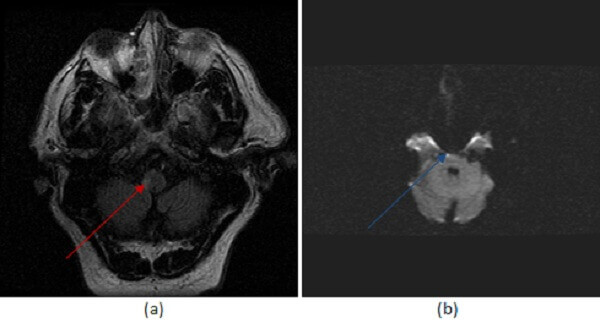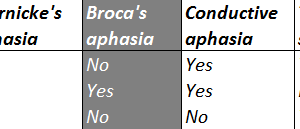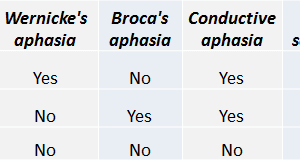
The lateral medullary or Wallenberg syndrome results from an infarct of the lateral medulla from disease in the posterior inferior cerebellar artery (PICA) or its branches. The PICA is the first major branch off the vertebral artery. The PICA and its branches supply the lateral medulla, the inferior cerebellum, choroid plexus of the fourth ventricle and portions of the remaining cerebellum (shared with the anterior/inferior cerebral artery).
Diagnosis: Lateral medullary (Wallenberg) syndrome

Figure 1: (a, red arrow) FLAIR images demonstrate increased signal involving the right lateral medulla (b, blue arrow) diffusion weighted imaging demonstrates focal increased signal in a smaller portion of this territory consistent with an acute or early subacute infarct.
The lateral medullary syndrome has specific clinical symptoms which include contralateral loss of pain and temperature sensation in the body with ipsilateral loss in the face. Additional symptoms include ataxia, swallowing and taste disorder through involvement of the ninth cranial nerve and Horner’s syndrome (ptosis, myosis and anhydrosis) through involvement of descending sympathetic fibers.




